Is Kratom Safe to Take With Other Medications?
Kratom itself isn’t particularly dangerous. However, it isn’t considered safe to take kratom with most prescription medications.
Certain classes of medications are especially dangerous — such as opiate painkillers, barbiturates, benzodiazepines, antipsychotics, blood pressure medications, and any compounds metabolized by the CYP2D6 enzymes (there are a lot).
Kratom has a powerful array of health benefits that largely rely on its ability to shift the neurochemical balance of the brain. If taken with other medications that cause a similar shift, it could increase the risk of side effects.
In general, if you’re taking any kind of prescription medication you should speak with your doctor about kratom first.
Related: What are the side effects of kratom?
Kratom-Drug Interactions Chart
| Drug Class | Increased Effect | Decreased Effect | Slowed Metabolism | Level of Risk |
| ACE Inhibitors | ✅ | ✅ | ||
| Alcohol | ✅ | ✅ | ||
| Alpha-Blockers | ✅ | ✅ | ||
| Anti-Epileptics | ✅ | |||
| Antibiotics | ✅ | |||
| Antihistamines | ✅ | ✅ | ✅ | |
| Barbiturates | ✅ | ✅ | ✅ | |
| Benzodiazepines | ✅ | ✅ | ✅ | |
| Beta-blockers | ✅ | ✅ | ||
| Blood Thinners | ✅ | ✅ | ||
| Biguanides | ✅ | ✅ | ✅ | |
| Calcium Channel Blockers | ✅ | ✅ | ||
| Diuretics | ✅ | ✅ | ✅ | |
| Eugeroics | ✅ | ✅ | ✅ | |
| HIV antivirals | ✅ | ✅ | ||
| Insulin | ✅ | |||
| Immunosuppressants | ✅ | ✅ | ||
| MAO Inhibitors | ✅ | |||
| NSAIDs | ✅ | ✅ | ||
| Opiates | ✅ | ✅ | ||
| PDE5 Inhibitors | ✅ | |||
| Peripheral Adrenergic Inhibitors | ✅ | ✅ | ||
| Proton Pump Inhibitors | ✅ | |||
| SARIs | ✅ | |||
| SNRIs | ✅ | |||
| SSRIs | ✅ | |||
| Statins | ✅ | ✅ | ||
| Stimulants | ✅ | ✅ | ✅ | |
| Tricyclic Antidepressants | ✅ | |||
| 5-ARIs | ✅ |
Types of Drug Interactions with Kratom
Kratom will interact differently with every medication class — but we can summarize each type of interaction in three ways:
1. Increased Effect (Agonistic Interaction)
The effects of some medications overlap with the effects of kratom. When this happens, the effect becomes extra strong — which could lead to increased risk of side effects or overdose — both of which you’ll want to avoid.
In lower doses, kratom has a stimulating effect. If combined with other stimulant medications, like Adderall or Modafinil, the stimulating effects could become too strong — leading to increased risk of damage to the heart, stroke, digestive discomfort, or insomnia.
In higher doses, kratom is a sedative. If combined with other sedative medications, it could lead to much stronger sedative action — potentially leading to feelings of sedation and grogginess. This could be dangerous if the user needs to drive or is responsible for small children or pets.
2. Decreased Effect (Antagonistic Interaction)
This interaction happens when kratom has the opposite effect to the medications one is using. If kratom cancels out or inhibits the effects of a medication, it could reduce the effectiveness of that medicine for treating a health condition.
When medications become less effective, symptoms of the underlying condition may present. In some cases, this effect could be dangerous.
3. Slowed Elimination (Metabolic Competitor)
All drugs are metabolized by enzymes in the liver called the cytochrome P450 enzymes. There are many different kinds, each one specialized for breaking down different types of compounds.
The vast majority of drugs (70%) are metabolized by CYP3A4, CYP2D6, CYP1A2, CYP2C9, and CYP2C19 [3].
Kratom contains over a dozen active ingredients, most of which are classified as alkaloids. These compounds have varying affinities for CYP enzymes, but most are metabolized by the CYP2D6, CYP2C9, and CYP3A4 enzymes [4].
When you take a medication and kratom that both require the same route of metabolism, they’re going to compete with each other and both will have a slower rate of elimination than normal.
This could mean both kratom and the medication last longer and remain in higher doses in the bloodstream.
For single doses, this usually isn’t a huge problem. This competitive interaction becomes a real problem for medications that are used on a daily basis. Gradually, levels of the medication could begin to build up in the bloodstream if it isn’t being cleared fast enough. Eventually, this could lead to toxic levels — thus increasing the chance for both side effects and overdose.
Related: What are the Signs and Symptoms of a Kratom Overdose?
What CYP Enzymes Does Kratom Affect?
Kratom contains a series of alkaloids that are responsible for its effects. There are 16 in total, but six make up the lion’s share of the alkaloid content.
Mitragynine is the most abundant, by far, making up nearly 66% of most strains. The rest will vary depending on the strain, but recent analysis has found the following concentrations: Payantheine (9%), speciogynine (7%), 7-hydroxymitragynine (2%), speciocilliatine (1%), and corynantheidine (<1%) [2].
Each of these alkaloids is metabolized differently in the liver and will compete with other drugs for metabolism. By far, the strongest competition is for the CYP2D6 isoenzymes. Both Mitraginine and paynantheine, the two most abundant alkaloids in the plant, have a potent inhibitory effect on these enzymes.
Therefore, drugs metabolized by these enzymes have the highest risk of metabolic inhibition and should be used cautiously with kratom.
Metabolic targets of common kratom alkaloids [1]:
- Mitraginine — CYP2D6 (potent), CYP2C19 (moderate), CYP3A4 (moderate)
- 7-hydroxymitragynine — CYP2C19 (moderate)
- Corynantheidine — CYP2D6 (Potent Inhibitor), CYP3A4 (moderate)
- Paynantheine — CYP2D6 (moderate), CYP3A4 (moderate)
- Speciocilliatine — CYP2C19 (moderate)
- Speciogynine — CYP2C19 (moderate)

Kratom & ACE Inhibitors
The chances of kratom interacting with ACE inhibitors are high and should be avoided unless under the guidance of a physician.
Kratom can cause an increase in blood pressure, which negates the effects of ACE inhibitors and may lead to serious adverse reactions like stroke, heart attack, and death.
ACE stands for angiotensin-converting enzyme. This enzyme is responsible for converting angiotensin I into angiotensin II — which causes blood vessels to contract and blood pressure to increase.
ACE inhibitors, therefore, work to treat high blood pressure by preventing the formation of hypertensive chemical messengers. They’re most commonly used in patients with heart disease, hypertension, or are at an increased risk of stroke.
List of Common ACE Inhibitors
- Benazepril hydrochloride (Lotensin)
- Captopril (Capoten)
- Enalapril Maleate (Vasotec)
- Fosinopril Sodium (Monopril)
- Lisinopril (Prinivel & Zestril)
- Moexipril (Univasc)
- Perindopril (Aceon)
- Quinapril Hydrochloride (Accupril)
- Ramipril (Altace)
- Trandolapril (Mavik)
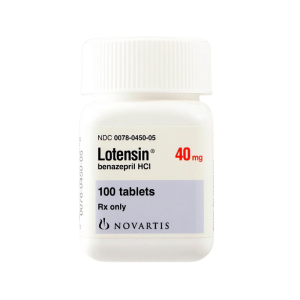
Kratom & Alpha-Blockers
Kratom has a moderate to high chance of interaction with alpha-blockers. Never use kratom if you’ve been prescribed alpha-blockers.
Kratom interacts with these medications by directly inhibiting the effects. This will prevent the medication from doing its job effectively, which may result in lethal consequences.
An alpha-blocker works by preventing the activation of adrenergic receptors in the blood vessels. When these receptors become activated due to stress or the intake of stimulants (including both coffee and kratom), they cause the blood vessels to contract. This leads to an increase in blood pressure.
Alpha-blockers are used to treat heart disease, hypertension, and stroke.
List of Common Alpha-Blockers
- Carvedilol (Coreg)
- Doxazosin Mesylate (Cardura)
- Prazosin Hydrochloride (Minipress)
- Terazosin Hydrochloride (Hytrin)
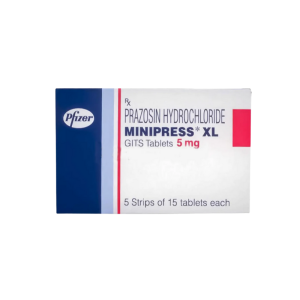
Kratom & Alpha-Glucosidase Inhibitors
Kratom and alpha-glucosidase inhibitors have a low level of risk. Caution is advised if you’ve been prescribed this class of medication. Never take kratom and alpha-glucosidase inhibitors together — always take them at least 2-hours apart from each other to minimize the chances of side effects.
Alpha-glucosidase inhibitors block an enzyme called glucosidase, which is responsible for breaking down starches into simple sugars in the digestive tract. If these sugars can’t be broken down, they aren’t able to be absorbed into the bloodstream — thus reducing blood glucose levels and preventing a significant spike in BGL following a meal.
Kratom has a mild hypoglycemic effect, which could exacerbate the effects of alpha-glucosidase medications. This could cause users to faint or feel dizzy due to low blood sugar levels.
List of Common Alpha-Glucosidase Inhibitors
- Acarbose (Precose)
- Miglitol (Glyset)
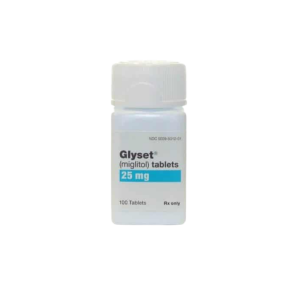
Kratom & Angiotensin II Receptor Blockers
Kratom and angiotensin II receptor blockers have a moderate to a high level of risk associated with their combination.
Angiotensin II is a vasoconstrictive chemical messenger (causes blood vessels to contract and blood pressure to increase). Most of the time, ACE inhibitors are used to block the creation of this chemical messenger, but in the event, these medications don’t work, an angiotensin II receptor blocker may be used instead.
Kratom has direct hypertensive effects that would counteract the effects of this medication. People who are prescribed this class of drug already have high blood pressure — so taking kratom with or without this medication could lead to an increased chance of stroke, heart attack, or other organ damage.
List of Common Angiotensin II Receptor Blockers
- Candesartan (Atacand)
- Eprosartan Mesylate (Teveten)
- Irbesartan (Avapro)
- Losartan Potassium (Cozaar)
- Telmisartan (Micardis)
- Valsartan (Diovan)
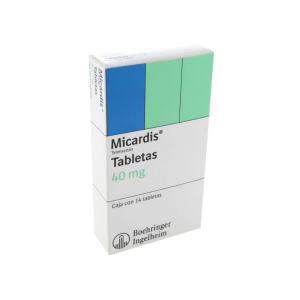
Kratom & Antibiotics
Kratom has a moderate to high risk of interaction with antibiotics. There are a lot of different types of antibiotics, each one with a separate level of risk when taken with kratom or other substances.
The primary concern with this interaction is that kratom could bind and neutralize the antibiotic — making them ineffective. For this reason, it’s important to wait for at least 2-hours between taking each substance to ensure everything is absorbed first.
There’s also a risk of metabolic competition that could cause either the antibiotics, kratom, or both to build up to dangerous levels in the bloodstream. This effect becomes more likely with long-term use of both kratom and antibiotics.
List of Common Antibiotics
- Amoxicillin
- Doxycycline
- Cephalexin
- Ciprofloxacin
- Clindamycin
- Metronidazole
- Azithromycin
- Sulfamethoxazole
- Levofloxacin
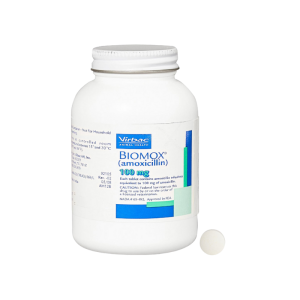
Kratom & Anti-Emetics
Kratom has a mild to moderate risk of interaction with most antiemetic medications.
Anti-emetics are designed to reduce or prevent feelings of nausea and vomiting. They’re often prescribed to cancer patients or alongside other medications that can cause nausea as a side effect.
Kratom itself is an emetic herb — which means if you’re sensitive to it or take enough of it, you’ll feel nauseous.
Some people take anti-emetic medications on purpose with kratom to eliminate this effect — but this is not recommended. The nauseating effects of kratom serve as an important protective action against using too much of the herb. Most people will vomit before ever reaching doses high enough to overdose on kratom, but if this effect is inhibited so the user can take higher doses, this safety net is no longer present.
Kratom may also serve to neutralize the benefits of antiemetic medications, causing them to lose their benefits.
List of Common Antiemetic Medications
- Aprepitant (Emend)
- Dexamethasone (DexPak)
- Dolasetron (Anzemet)
- Granisetron (Kytril)
- Ondansetron (Zofran)
- Palonosetron (Aloxi)
- Prochlorperazine (Compazine)
- Rolapitant (Varubi)
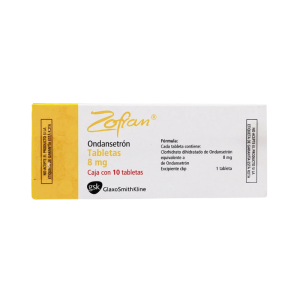
Kratom & Antihistamines
Kratom and antihistamines have a moderate level of risk — caution is advised when taking these compounds together.
An antihistamine works by blocking the effects of the pro-inflammatory messenger histamine. Some medications block histamine directly; others prevent a type of cell called a mast cell from breaking down and thus preventing it from releasing high doses of histamine and other inflammatory cytokines.
When we’re allergic to something, mast cells trigger a self-destruct cycle and dump large doses of histamine into the surrounding area. This causes the characteristic effects of an allergic reaction (runny nose and eyes, coughing or sneezing, hives, flushing, etc.).
Histamine has other important roles in the body, including neuroregulation of the waking portion of the sleep-wake cycle. This is why antihistamines often have sedating side effects.
Kratom may interact with certain antihistamines by preventing their ability to stabilize mast cells and could lead to an increase in sedation.
Some users take high doses of the antihistamine Benadryl (diphenhydramine) to get high. The inhibitory action on histamine causes a state of delirium. Mixing kratom with high-dose Benadryl is extremely dangerous and should be avoided at all costs. Kratom could potentiate the effects of Benadryl by interfering with metabolism — this interaction could result in death.
List of Common Antihistamine Medications
- Carbinoxamine (Palgic)
- Desloratadine (Clarinex)
- Hydroxyzine (Atarax & Vistaril)
- Levocetirizine (Xyzal)
- Brompheniramine (Dimetane)
- Cetirizine (Zyrtec)
- Chlorpheniramine (Chlor–Trimeton)
- Clemastine (Tavist)
- Diphenhydramine (Benadryl)
- Fexofenadine (Allegra)
- Loratadine (Alavert & Claritin)
- Promethazine (Phenergan)
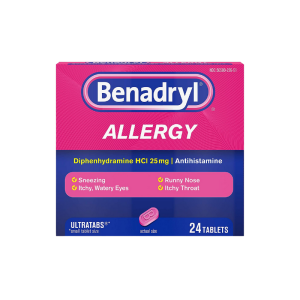
Kratom & Antipsychotics
Kratom should never be taken with antipsychotic medications of any kind. These medications require very careful titration and dosage, and have a high risk of adverse reactions on their own. Adding other substances that shift the delicate neurochemical balance (such as kratom) could result in severe side effects.
Many antipsychotics are metabolized by the CYP2D6 liver enzymes, which is the primary target of kratom. If taken together, these medications could reach toxic levels — resulting in serious consequences.
Antipsychotics (AKA neuroleptics) are a large and diverse class of drugs used to treat psychosis, schizophrenia, bipolar disorder, and many other psychotic disorders. There are many drugs in this class. Often, doctors will mix and match these medications until they find a cocktail that works.
List of Typical Antipsychotics
- Bromperidol (Bromidol, Bromodol)
- Clopenthixol (Sordinol)
- Flupentixol (Depixol, Fluanxol)
- Fluphenazine (Prolixin)
- Haloperidol (Haldol)⚠️
- Oxyprothepin (Meclopin)
- Perphenazine (Trilafon)
- Pipotiazine (Piportil)
- Zuclopenthixol (Cisordinol, Clopixol)
List of Atypical Antipsychotics
- Lurasidone (Latuda)
- Olanzapine (Zyprexa)
- Risperidone (Risperdal)⚠️
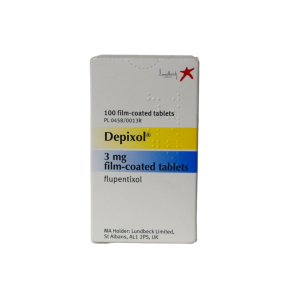
Kratom & Alcohol
Kratom and alcohol have a high risk of moderate to severe interactions. It’s not considered safe to take kratom with alcohol for any reason.
The effects of these substances have a lot of overlap. When combined, the effects can cause the user to pass out and vomit — which is extremely dangerous.
Additionally, kratom and alcohol can cause added stress on the liver, potentially leading to permanent liver damage.

Kratom & Barbiturates
Kratom and barbiturates have a moderate to high risk or negative interaction.
Barbiturates are an older class of anxiety and insomnia medications that have been largely replaced with the use of benzodiazepines. Barbiturates work by boosting the binding capacity of a neurotransmitter called GABA.
GABA is the primary inhibitory compound in the brain. It’s responsible for reversing feelings of anxiety and easing the mind off to sleep.
Barbiturates are considered “dirty” medications because they bind to many different receptor types. Some of these receptors are intentional (such as GABA), but others are unintentional and will lead to adverse reactions.
Even on their own, barbiturates aren’t considered safe and carry a high risk of mild to severe side effects. Kratom only further pushes the risk of adverse reaction by competing for the metabolism of barbiturates in the liver and adding its own shift in brain neurochemical balance.
List of Common Barbiturate Medications
- Amobarbital (Amytal Sodium)
- Butabarbital (Butisol Sodium)
- Mephobarbital (Mebaral)
- Pentobarbital (Nembutal Sodium)
- Phenobarbital (Luminal)
- Secobarbital (Seconal)
Kratom & Beta-Blockers
The risk of interaction between kratom and beta-blockers is considered high and should be avoided at all costs.
Beta-blockers work by reducing the contractile force of the heart. They’re used with patients suffering from heart disease and hypertension. When the arteries have become stiff and rigid, the heart is forced to beat harder in order to pump blood effectively around the body. Beta-blockers reduce some of the stress this causes on the heart and help regulate abnormal rhythms caused by previous heart attacks,
Kratom directly counteracts the effects of this medication by activating the adrenergic receptors in the heart muscle and arteries. This causes blood pressure, heart rate, and contractile force to increase.
Kratom and beta-blockers should never be used in combination with each other for any reason.
List of Common Beta-Blockers
- Acebutolol (Sectral)
- Atenolol (Tenormin)⚠️
- Betaxolol (Kerlone)
- Bisoprolol Fumarate (Zebeta)
- Carteolol Hydrochloride (Cartrol)
- Metoprolol Tartrate (Lopressor)⚠️
- Metoprolol Succinate (Toprol-XL)⚠️
- Nadolol (Corgard)
- Penbutolol Sulfate (Levatol)
- Pindolol (Visken)
- Propranolol Hydrochloride (Inderal, InnoPran & Pronol)
- Sotalol Hydrochloride (Betapace)
- Timolol Maleate (Blocadren)
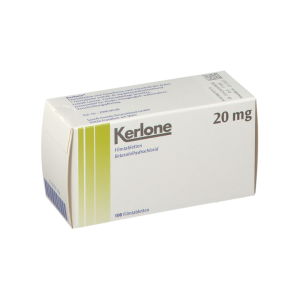
Kratom & Benzodiazepines
Kratom and benzodiazepine medications have a high risk of severe interaction. These substances should never be used together unless given explicit consent from a prescribing physician.
The chances of a serious or fatal reaction are low but not impossible with this combination.
Benzodiazepines are primarily used for treating insomnia and anxiety disorders and are sometimes used as muscle relaxants.
Benzodiazepines are highly addictive drugs. On their own, the risk of overdose is low, but when combined with alcohol, kratom, or other medications, the risk of severe side effects and overdose skyrocket.
List of Common Benzodiazepines
- Alprazolam (Xanax)
- Chlordiazepoxide (Librium)
- Clonazepam (Klonopin)
- Clorazepate (Tranxene)
- Diazepam (Valium)
- Estazolam (Prosom)
- Flurazepam (Dalmane)
- Lorazepam (Ativan)
- Midazolam (Versed)
- Oxazepam (Serax)
- Temazepam (Restoril)
- Triazolam (Halcion)
- Quazepam (Doral)
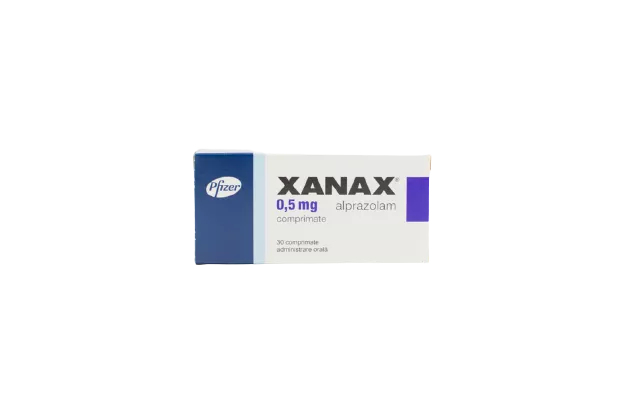
Kratom & Blood Thinners
Kratom and blood thinners have a moderate risk of causing side effects. People who are prescribed blood thinners should consult their doctor before taking kratom.
Kratom may interact with blood thinners by hindering the body’s ability to metabolize and eliminate them — potentially leading to toxic build-up in the bloodstream. Warfarin, in particular, is notoriously difficult for the body to eliminate. Over time, slowed elimination of this medication could lead to a toxic buildup within the body.
Kratom also has both hypotensive and hypertensive actions — depending on what dose and strains are used. Some blood thinners have hypotensive effects already — when combined with kratom, blood pressure could drop low enough to make the user feel lightheaded and dizzy.
The biggest concern comes from the potential increase in blood pressure caused by kratom. Many people who take blood thinners are already at a higher risk of heart attack or stroke. Taking substances that cause a further increase in blood pressure could result in a higher chance of stroke or heart attack.
List of Common Blood Thinner Medications
- Apixaban (Eliquis)
- Dabigatran (Pradaxa)
- Enoxaparin (Lovenox)
- Rivaroxaban (Xarelto)
- Warfarin (Coumadin & Jantoven)
- Clopidogrel (Plavix)
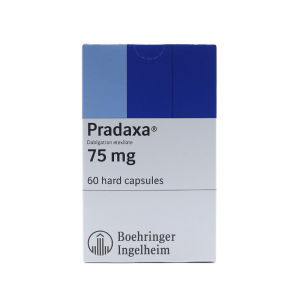
Kratom & Biguanides
Kratom has a low chance of causing severe interactions with biguanides like Metformin. The biggest potential for risk comes from the metabolic competition of these two substances. This risk can be reduced by taking kratom and Meftformin at least 2-hours apart.
Additionally, users who are prescribed Metformin should avoid taking kratom on a daily basis and speak with their doctor about it first.
Metformin is sold under many trade names, including Kazano, Invokamet, Xigduo XR, Synjardy, Glucovance, Jentadueto, Actoplus, PrandiMet, Avandamet, Kombiglyze XR, & Janumet.
List of Common Biguanide Medications:
- Metformin (Glucophage, Glucophage XR, Fortamet, Glumetza, & Riomet)
- Canagliflozin (Invokana)
- Dapagliflozin (Farxiga)
- Saxagliptin (Onglyza)
- Empagliflozin (Jardiance)
- Linagliptin (Tradjenta)
- Ertugliflozin (Steglatro & Segluromet)
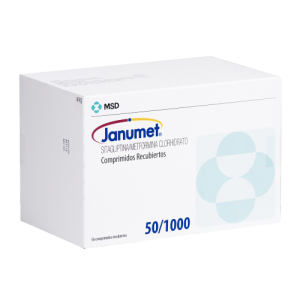
Kratom & Calcium Channel Blockers
Kratom may inhibit the effects of calcium channel blockers and prevent them from doing their job effectively.
It’s recommended that anybody prescribed these medications avoid the use of kratom until first speaking with their prescribing doctor about it.
Our muscles require the flow of calcium in and out of the muscle cell in order to cause it to contract and relax. By reducing the ability for calcium to flow into the cell, these calcium channel blockers are able to reduce the contractile force of the heart. This can help patients suffering from cardiac damage after a heart attack or severe hypertension.
Because of how severe both of these conditions are, it’s critical the medications you’re taking are effective. Kratom may inhibit the effects of this medication by stimulating the heart muscle and increasing contractile force.
Therefore, kratom should never be taken in combination with calcium channel blockers unless otherwise instructed by your primary care physician.
List of Common Calcium Channel Blockers
- Amlodipine (Norvasc, Lotrel)
- Bepridil (Vasocor)
- Diltiazem Hydrochloride (Cardizem CD, Cardizem SR, Dilacor XR, Tiazac)
- Felodipine (Plendil)
- Isradipine (DynaCirc, DynaCirc CR)
- Nicardipine (Cardene SR)
- Nifedipine (Adalat CC, Procardia XL)
- Nisoldipine (Solar)
- Verapamil Hydrochloride (Calan SR, Covera HS, Isoptin SR, Verelan)
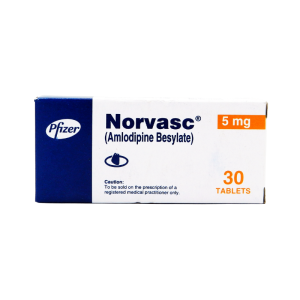
Kratom & Central Agonists
Kratom brings a moderate level of risk when combined with central agonists.
It may inhibit the effectiveness of this medication class and prevent it from doing its job effectively.
Kratom can cause both an increase or decrease in blood pressure depending on the dose and strain used.
If kratom increases blood pressure in combination with central agonists, it could negate their ability to work — thus making it ineffective for treating the condition it was prescribed for.
If kratom decreases blood pressure in combination with central agonists, it could cause pressure to drop too low — resulting in dizziness and fainting.
Central agonists have many different uses. They’re primarily used to treat hypertension, opioid addiction, alcohol addiction, menopause, ADHD, muscle spasticity, fibromyalgia, and more.
List of Common Central Agonists
- Alpha Methyldopa (Aldomet)
- Clonidine Hydrochloride (Catapres)
- Guanabenz Acetate (Wytensin)
- Guanfacine Hydrochloride (Tenex)
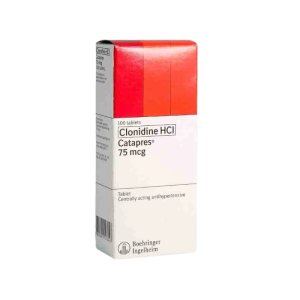
Kratom & Diuretics
Kratom may increase the effects of diuretic medications — potentially leading to issues with low blood pressure or dehydration.
The severity of this interaction is considered low overall, but with a few individual exceptions.
Kratom may inhibit the metabolism of diuretic medications, leading to an increase in serum blood levels. If diuretic drugs become too concentrated, they can cause liver or kidney damage.
To prevent this from happening, it’s wise to first speak with your doctor about kratom if you’ve been prescribed diuretics. They may be able to adjust your dose accordingly to offset the slowed metabolism caused by kratom.
Additionally, it’s a good idea to avoid taking kratom every day with this combination to give the body a chance to “catch up” on the metabolism of other medications.
List of Common Diuretics
- Chlorthalidone (Hygroton)
- Chlorothiazide (Diuril)
- Hydrochlorothiazide (Esidrix, Hydrodiuril & Microzide)
- Indapamide (Lozol)
- Metolazone (Mykrox & Zaroxolyn)
- Amiloride Hydrochloride (Midamar)
- Spironolactone (Aldactone)
- Triamterene (Dyrenium)
- Furosemide (Lasix)
- Bumetanide (Bumex)
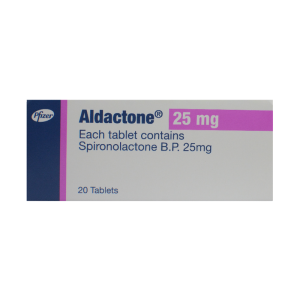
Kratom & Dipeptidyl Peptidase-4 (DPP-4) Inhibitors
Kratom may interact with DPP-4 inhibitors by slowing the ability of the liver to metabolize them effectively. If the combination is repeated, it could lead to high levels of insulin in the body — leading to low blood sugar levels and other metabolic imbalances.
The severity of this interaction is considered low, but you should always consult your doctor about kratom first if you’ve been prescribed a DPP-4 or any other anti-diabetic medication.
DPP-4 inhibitors are used to treat diabetes. These medications block the enzyme responsible for breaking down incretins — which stimulate the release of insulin following a meal.
This effect leads to an elevation in insulin and a reduction in glucagon (which works in opposition to insulin). This is thought to reduce blood sugar levels in patients suffering from diabetes.
List of Common DPP-4 Inhibitors
- Alogliptin (Nesina, Kazano, Oseni)
- Linagliptin (Tradjenta, Glyxambi, & Jentadueto)
- Saxagliptin (Onglyza, Kombiglyze XR)
- Sitagliptin (Januvia, Janumet, & Juvisync)
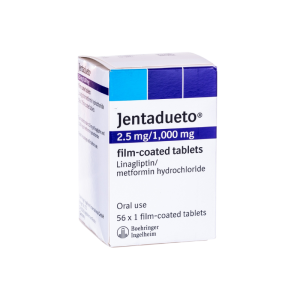
Kratom & GLP-1 Receptor Agonists
Kratom has a low chance of interacting with GLP-1 agonists because of the lack of metabolic involvement with their metabolism and elimination.
GLP-1 stands for glucagon-like peptide-1. These medications mimic the effects of incretin to cause an increase in insulin secretion.
List of Common GLP-1 Receptor Agonists
- Albiglutide (Tanzen)
- Dulaglutide (Trulicity)
- Exenatide (Byetta, Bydureon)
- Liraglutide (Victoza)
- Semaglutide (Ozempic)
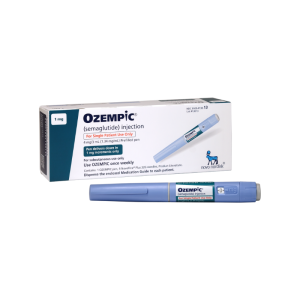
Kratom & Immunosuppressants
Kratom and immunosuppressant medications should never be used in combination.
One of the lesser-talked-about effects of kratom is its ability to regulate the immune system. Several key alkaloids in the plant have been shown to either upregulate or inhibit various aspects of the immune system.
Therefore, kratom could, in theory, prevent immunosuppressant drugs from doing their job.
Because of the serious nature of the conditions immunosuppressants are used to treat, anything that could compromise their ability to function should be avoided at all costs.
List of Common Immunosuppressant Medications
- Azathioprine (Imuran)
- Mycophenolate Mofetil (Cellcept)
- Cyclosporine (Neoral, Sandimmune, Gengraf)
- Methotrexate (Rheumatrex)
- Leflunomide (Arava)
- Prednisone (Deltasone)
- Cyclophosphamide (Cytoxan)
- Chlorambucil (Leukeran)
- Nitrogen Mustard (Mustargen)
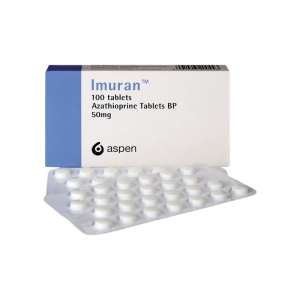
Kratom & Insulin
The chances of a negative interaction between kratom and insulin is low. Neither of these substances have much in common and don’t appear to pose much risk in terms of metabolism or effects.
Some animal studies suggest kratom may have a hypoglycemic effect, but this action is mild and hasn’t been repeated yet in humans. However, there is always a chance this could compound the hypoglycemic effects of insulin — leading to dizziness and fainting.
To reduce the chances of experiencing this interaction, it’s wise to separate your dose of insulin from kratom by at least 2 hours. Additionally, be transparent with your doctor about kratom so they can do their job and rule out any serious interactions that could take place with insulin or any of your other medicaitons.
List of Common Insulin Medications
- Insulin Aspart (NovoLog, FlexPen, Fiasp)
- Insulin Glulisine (Apidra)
- Insulin Lispro (Humalog)
- Insulin Isophane (Humulin N, Novolin N)
- Insulin Degludec (Tresiba)
- Insulin Detemir (Levemir)
- Insulin Glargine (Lantus, Toujeo)
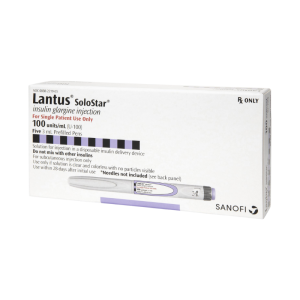
Kratom & MAO Inhibitors
Kratom and MAO inhibitors are not considered safe to mix.
MAO inhibitors require careful titration in order to work properly. This involves a careful balance between how much of the medication is consumed each day versus how much of it is metabolized and eliminated by the liver.
Kratom alkaloids shift the balance of metabolism of MAO inhibitors and may lead to a gradual increase within the bloodstream. Eventually, this could lead to toxic levels — dramatically increasing the chances of experiencing side effects.
List of Common MAO Inhibitors
- Isocarboxazid (Marplan)
- Phenelzine (Nardil)
- Selegiline (Emsam)
- Tranylcypromine (Parnate)
Kratom & Meglitinides
Kratom may interact with meglitinides by interfering with the body’s ability to eliminate them when they’re no longer needed.
With that said, the chances of experiencing a severe reaction from this combination are low.
Meglitinides work by stimulating the release of insulin from the pancreas. They’re used as a treatment for diabetes.
It’s possible that kratom could enhance the hypoglycemic effects of meglitinide medications — resulting in dizziness or fainting. To avoid this effect, kratom and meglitinide medications should be taken separately (at least 2 hours apart).
List of Common Meglitinide Medications
- Nateglinide (Starlix)
- Repaglinide (Prandin, Prandimet)

Kratom & NDRI Medications
NDRI stands for noradrenalin-dopamine reuptake inhibitors. They inhibit the reuptake of dopamine and noradrenaline in the brain, causing serum concentrations to increase.
These medications are commonly used for treating ADHD, Parkinson’s Disease, and narcolepsy.
The chances of metabolic interference of NDRI medications from kratom are low as most NDRIs use the CYP2B6 pathway for metabolism. Kratom has little to no impact on this enzymatic pathway.
Kratom and NDRI drugs are considered low to moderate-risk in terms of potential interactions. The exception here is bupropion because it’s metabolized by the CYP2D6 enzyme.
List of Common NDRI Medications
- Bupropion (Budeprion, Buproban, Wellbutrin & Zyban)⚠️
- Amineptine (Survector, Maneon, Directim)
- Desoxypipradrol (2-DPMP)
- Dexmethylphenidate (Focalin)
- Difemetorex (Cleofil)
- Diphenylprolinol (D2PM)
- Ethylphenidate
- Fencamfamine (Glucoenergan, Reactivan)
- Fencamine (Altimina, Sicoclor)
- Lefetamine (Santenol)
- Methylenedioxypyrovalerone (MDPV)
- Methylphenidate (Ritalin, Concerta, Metadate, Methylin, Rubifen, Stimdate)
- Nomifensine (Merital)
- O-2172
- Phenylpiracetam (Phenotropil, Carphedon)
- Pipradrol (Meretran)
- Prolintane (Promotil, Katovit)
- Pyrovalerone (Centroton, Thymergix)
- Solriamfetol (Sunosi)
- Tametraline (CP-24,411)
- WY-46824
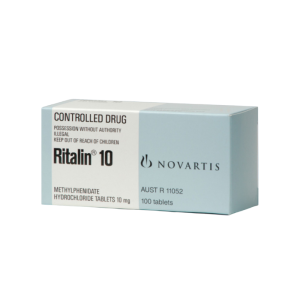
Kratom & NSAID Painkillers
Kratom and NSAID medications such as Aspirin and Ibuprofen have a mild to moderate risk of interaction.
When used within the safe recommended doses, it’s unlikely for this combination to lead to any noticeable side effects. However, in high doses, kratom and NSAIDs could result in serious liver injury or the formation of ulcers in the stomach or duodenum.
Some NSAIDs will compete for metabolism in the liver with kratom, which could lead to an elevation of both substances in the bloodstream.
If you’re taking prescription NSAID medications, it’s wise to avoid taking kratom without first consulting your doctor.
List of Common NSAID Painkillers
- Aspirin (Ascriptin, Aspergum, Entercote)
- Acetaminophen (Tylenol)
- Ibuprofen (Motrin, Advil, Nuprin, Caldolor & Neoprofen)
- Celecoxib (Celebrex & Onsenal)
- Naproxen (Aleve)
- Ketorolac (Toradol)
- Etodolac (Ultradol)
- Meloxicam (Mobic)
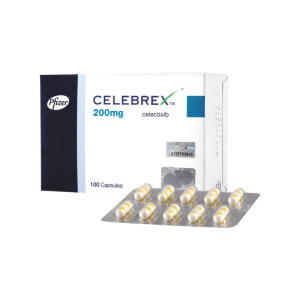
Kratom & Opiate Painkillers
Kratom should never be used in combination with opiate painkillers for any reason. This combination could prove lethal.
Opiates and kratom target the same receptors. Even on their own, opiate medications bring a high risk for both abuse and overdose. Kratom will potentiate these medications (make them stronger) — dramatically increasing the chances of side effects or overdose.
List of Common Opiate Painkillers
- Buprenorphine (Cizdol & Brixadi)⚠️
- Codeine⚠️
- Diamorphine (Heroin)⚠️
- Pethidine (Meperidine & Demerol)⚠️
- Fentanyl (Abstral & Actiq)⚠️
- Hydrocodone (Hysingla ER, Zohydro ER & Hycodan)⚠️
- Hydrocodone & Paracetamol (Vicodin)⚠️
- Hydromorphone (Dilaudid)⚠️
- Methadone (Methadose & Dolophine)⚠️
- Morphine (Kadian & Roxanol)⚠️
- Oxycodone (Percodan, Endodan, Roxiprin, Percocet, Endocet, Roxicet & OxyContin)⚠️
- Tramadol (Ultram, Ryzolt & ConZip)⚠️
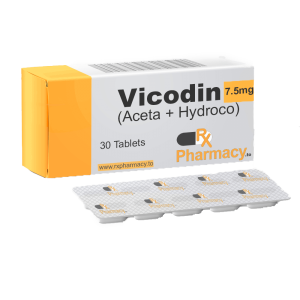
Kratom & PDE5 Inhibitors
While chances are low, kratom and PDE5 inhibitors such as Viagra or Cialis could damage the arterial system, heart, or brain when used in combination.
It’s wise to avoid using kratom if you’ve taken PDE5 inhibitors at any point within the past three days.
PDE5 inhibitors are the primary medication class for treating erectile dysfunction. They work by enhancing the ability of arteries that provide blood flow to the penis — thus facilitating an erection.
The enzymes these medications target are found in the penis as well as the eyes and ears. It’s also involved indirectly with other areas of the body.
List of Common PDE5 Inhibitor Medications
- Avanafil (Stendra)
- Mirodenafil (Mvix)
- Sildenafil (Viagra)
- Tadalafil (Cialis)
- Udenafil (Zydena)
- Vardenafil (Levitra, Staxyn, and Vivanza)
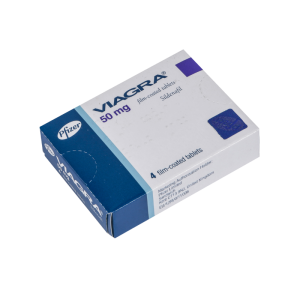
Kratom & Peripheral Adrenergic Inhibitors
Kratom may interact with peripheral adrenergic inhibitors and stop them from working properly.
Peripheral adrenergic inhibitors block the adrenergic receptors in the arterial system outside the brain. By inhibiting these receptors, blood vessels relax and widen — thus causing a drop in blood pressure.
Kratom contains several alkaloids that are considered peripheral adrenergic agonists — which runs completely opposite to the effects of these medications. This could cause kratom to negate the effects of these medications, causing blood pressure to increase.
List of Common Peripheral Adrenergic Inhibitors
- Guanadrel (Hylorel)
- Guanethidine Monosulfate (Ismelin)
- Reserpine (Serpasil)
Kratom & Proton Pump Inhibitors
Kratom is not likely to interact directly with proton pump inhibitors. Both substances have entirely different mechanisms of action and are metabolized by different liver enzymes.
However, PPI medications may result in difficulty with digestion, causing kratom to remain undigested for longer periods. This could cause the onset of kratom effects to take longer and increase the chances of digestive upset.
List of Common PPIs
- Pantoprazole (Protonix)
- Ranitidine (Zantac)
- Omeprazole (Prilosec, Prilosec OTC, Zegerid)
- Lansoprazole (Prevacid)
- Rabeprazole (Aciphex)
- Esomeprazole (Nexium)
- Dexlansoprazole (Dexilant)

Kratom & SARI Medications
Kratom may interfere with the metabolism and elimination of SARI medications — which could (theoretically) lead to a toxic buildup of serotonin. When this happens, it can result in a condition called serotonin syndrome, which can be fatal if it isn’t treated immediately.
SARI stands for serotonin antagonist and reuptake inhibitor. They block the 5-HT2A receptor as well as the reuptake channel for serotonin. This results in higher concentrations of serotonin in the synapses.
These medications are used to treat depression, anxiety, and insomnia.
Side effects of this medication include headaches and nausea, which are also common side effects of kratom. Taking these substances together could result in more intense side effects from both compounds.
List of Common SARI Medications
- Trazodone (Desyrel & Oleptro)
- Nefazodone (Serzone)
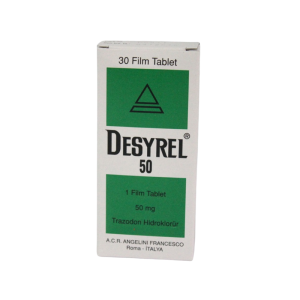
Kratom & SDA Medications
Kratom may exacerbate the sedative effects of SDA (serotonin–dopamine antagonists) medications in higher doses and could lead to elevations of these drugs in the system by inhibiting their metabolism and elimination from the body.
In lower doses, kratom is a stimulant, which may offer a positive improvement to the most common and problematic side effect of SDAs, which is sedation. However, this interaction has not been proven safe, and there are likely other mechanisms involved that could prove more problematic.
Any substance that causes a powerful shift in neurochemical balance should be used with extreme caution and under the guidance of an expert. SDAs and kratom both cause a change in neurochemistry and, therefore, should not be used in combination without expert oversight.
List of Common SDA Medications
- Aripiprazole (Abilify)
- Brexpiprazole (Rexulti)
- Olanzapine (Zyprexa)
- Quetiapine (Seroquel)
- Ziprasidone (Geodon)

Kratom & SNRI Medications
When taken together, kratom and SNRI medications have a high chance of negative interaction.
SNRI stands for serotonin and norepinephrine reuptake inhibitor. They block specific reuptake channels for serotonin and norepinephrine to increase their concentration in the synapses.
Kratom also increases both serotonin and norepinephrine in the brain through separate mechanisms. Together, this combination could lead to increased side effects from both substances — including headaches, insomnia, irritability, mood irregularities, nausea, and more.
List of Common SNRI Medications
- Atomoxetine (Strattera)
- Desvenlafaxine (Pristiq, Khedezla)
- Duloxetine (Cymbalta, Irenka)⚠️
- Levomilnacipran (Fetzima)
- Milnacipran (Savella)
- Venlafaxine (Effexor XR)
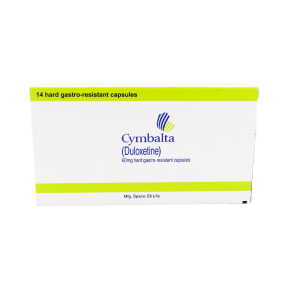
Kratom & SSRI Medications
Kratom has a low to moderate level of risk when used in combination with SSRI medications.
There are a lot of reports of people taking kratom with their SSRI medications without any significant issues — but the chances of a severe reaction are still possible.
Kratom may slow the metabolism of SSRI medications, which rely heavily on a concept called titration, where the amount of the drug consumed matches the amount of the drug that’s metabolized perfectly. If kratom shifts this careful balance, it could cause the medications to build up in the body — eventually leading to a condition called serotonin syndrome.
List of Common SSRI Medications
- Citalopram (Cipramil & Celexa)
- Dapoxetine (Priligy)
- Escitalopram (Cipralex & Lexapro)
- Fluoxetine (Prozac, Rapiflux, Sarafem, Selfemra & Oxactin)
- Fluvoxamine (Faverin)
- Paroxetine (Seroxat)
- Sertraline (Zoloft, Lustral)
- Vortioxetine (Brintellix)
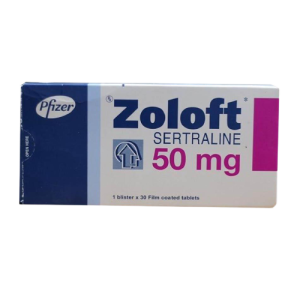
Kratom & SGLT-2 Inhibitors
Kratom and SGLT-2 medications are unlikely to result in any significant interactions.
SGLT stands for sodium-glucose transporter. This transporter is located in the kidneys and is responsible for moving sugar from the kidneys back into the bloodstream. This sugar was previously removed by the kidneys as they filter the blood. The sugar is removed, then reintroduced into the bloodstream via SGLT.
SGLT-2 inhibitors block this from happening, causing the sugar to be eliminated from the body. It’s used as a treatment for high blood sugar.
List of Common SGLT-2 Inhibitors
- Dapagliflozin (Farxiga & Xigduo XR)
- Canagliflozin (Invokana, Invokamet)
- Empagliflozin (Jardiance, Glyxambi, Synjardy)
- Ertugliflozin (Steglatro)
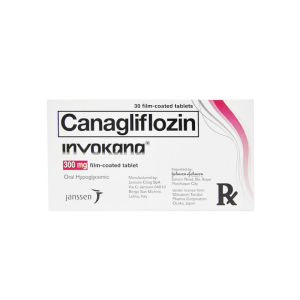
Kratom & Statin Drugs
Kratom and statin drugs have a low chance of producing side effects when used in combination.
Statins are a class of drugs that block an enzyme in the liver called HMG-CoA reductase. This enzyme is responsible for producing cholesterol — so these medications are used to treat high cholesterol.
Kratom may interfere with the metabolism of statin drugs via the CYP3A4 enzymatic pathway, but there are no cases of this interaction causing any problems.
With that said, it’s wise to speak to your doctor about using kratom if you’ve been prescribed statin medications to manage your cholesterol levels.
List of Common Statin Medications
- Atorvastatin (Lipitor)
- Lovastatin (Altoprev)
- Pitavastatin (Livalo, Zypitamag)
- Pravastatin (Pravachol)
- Rosuvastatin (Crestor & Ezalor)
- Simvastatin (Zocor)
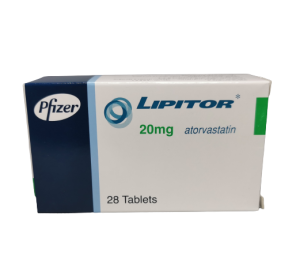
Kratom & Stimulants
Kratom should not be mixed with stimulant medications for any reason.
Kratom itself is considered a stimulant in lower doses. When combined with other, more powerful stimulants like Adderall or Vyvanse, it could lead to severe side effects such as cardiac injury, seizures, or nerve damage.
List of Common Stimulant Medications
- Amphetamine (Adderall, Adzenys ER, Mydayis)
- Lisdexamfetamine Dimesylate (Vyvanse)
- Dextroamphetamine Sulfate (Zenzedi & Dexedrine)
- Methylphenidate (Ritalin)
- Atomoxetine (Strattera)
- Methamphetamine (Desoxyn, Methedrine)
- Modafinil (Provigil & Nuvigil)
- MDMA (Ecstasy)
- Nicotine (Habitrol, Nicoderm CQ, Nicotrol)
- Cocaine (Erythroxylum coca)
- Caffeine (Coffee, Tea, Yerba Maté, Guarana)

Kratom & Tricyclic Antidepressants
Kratom is very likely to interact with tricyclic medications in one form or another.
In mild interactions, kratom will increase the chances of experiencing side effects from the medication — which usually include headaches, insomnia, disturbing dreams, or nausea.
In severe reactions, kratom and tricyclic medications could lead to a condition called serotonin syndrome — which can be fatal.
Tricyclic medications are first-generation antidepressants. They’re rarely used today because of the high chances of side effects, but some doctors continue to prescribe these medications when more modern drugs don’t work.
List of Common Tricyclic Antidepressants
- Amitriptyline (Elavil)
- Amoxapine (Asendin)
- Desipramine (Norpramin)
- Doxepin (Sinequan, Quitaxon & Aponal)
- Imipramine (Tofranil)
- Nortriptyline (Pamelor)
- Protriptyline (Vivactil)
- Trimipramine (Surmontil)
List of Atypical Tricyclic Antidepressants
- Tianepine (Stablon, Coaxial)
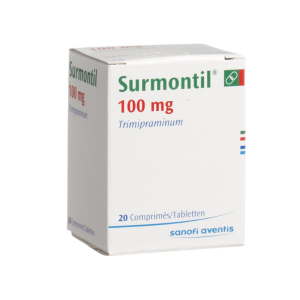
Kratom & Z-Drugs
Kratom may exert an agonistic interaction with Z-drugs by boosting the sedative effects. Taking them in combination could lead to a higher risk of side effects associated with the sedative action of these medications — such as memory lapses, seizures, and sudden death.
While chances of interaction within this class are low, the severity of the side effects is a good reason to avoid this combination anyway.
Z-drugs (AKA non-benzodiazepines) are a newer class of drug with effects that closely mimic the effects of benzodiazepines but have an entirely different chemical structure (and are therefore not classified as benzodiazepines).
This class of drug is primarily used to treat insomnia, anxiety, and psychotic disorders.
Some Z-drugs, such as Ambien, don’t exert a lot of demand on the CYP450 enzymatic system in the liver and are, therefore, less likely to have a metabolic interaction with kratom. Others, such as zopiclone, have a high affinity for these enzymes and, therefore, may interact strongly with kratom.
List of Common Z-Drugs:
- Alpidem (Ananxyl)
- Necopidem
- Saripidem
- Zolpidem (Ambien)
Kratom & 5-Alpha-Reductase Inhibitors (5-ARIs)
The risk of interaction between kratom and 5-ARI medications is low but not nonexistent.
Both kratom and 5-ARIs are metabolized by the CYP3A4 enzyme. Taking them together could lead to a slower elimination of both substances from the body — leading to side effects with repeated use.
5-ARI stands for 5-alpha-reductase — which is an enzyme that catalyzes the formation of dihydrotestosterone (DHT). An increase in DHT is thought to be one of the primary causes of male pattern balding and benign prostatic hyperplasia (BPH).
Side effects ranging from skin rashes, decreased libido, and increased breast size could all result from taking kratom alongside your prescription 5-ARI medication.
List of Common 5-ARI Medications
- Alfatradiol (Ell-Cranell Alpha & Pantostin)
- Dutasteride (Avodart)
- Epristeride (Aipuliete & Chuanliu)
- Finasteride (Proscar & Propecia)
- Saw Palmetto Extract (Permixon)
Related: Will Kratom Interact With Testosterone?
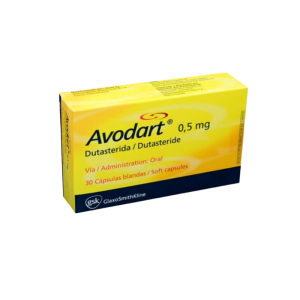
Bottom Line: Can I Take Kratom With My Medications
On its own, kratom is not a dangerous plant. It contains active alkaloids that have proven therapeutic effects and a relatively high level of safety (when used responsibly).
However, for the same reason, kratom has useful benefits; it also carries a risk of side effects or negative interactions with other drugs.
Kratom is a potent inhibitor of key liver enzymes involved with metabolizing other medications and strongly influences the neurochemical balance. If mixed with other drugs that require the same path for metabolism or exert their own shift in neurochemistry, it can lead to adverse effects.
Generally, kratom should not be mixed with any medications without first speaking to a doctor. The most dangerous combinations are opioids, stimulant drugs, and antipsychotic medications.
- List Kamble, S. H., Sharma, A., King, T. I., Berthold, E. C., León, F., Meyer, P. K. L., … & Avery, B. A. (2020). Exploration of cytochrome P450 inhibition mediated drug-drug interaction potential of kratom alkaloids. Toxicology letters, 319, 148-154.
- Hassan, Z., Muzaimi, M., Navaratnam, V., Yusoff, N. H., Suhaimi, F. W., Vadivelu, R., … & Müller, C. P. (2013). From Kratom to mitragynine and its derivatives: physiological and behavioural effects related to use, abuse, and addiction. Neuroscience & Biobehavioral Reviews, 37(2), 138-151.
- Arimoto, R. (2006). Computational models for predicting interactions with cytochrome p450 enzyme. Current topics in medicinal chemistry, 6(15), 1609-1618.
- Hanapi, N. A., Ismail, S., & Mansor, S. M. (2013). Inhibitory effect of mitragynine on human cytochrome P450 enzyme activities. Pharmacognosy research, 5(4), 241.

